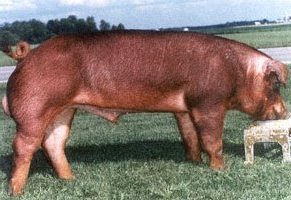
An on-going sanitation program is essential to maintaining fly populations at low levels. Manure, spilled feed, and wet straw should be removed twice a week in order to interrupt the breeding cycle of flies. Manure should either be spread onto fields to dry or placed in lagoons to liquefy. Insecticides may be applied as residual sprays, non-residual knockdown or contact sprays, baits, or feed additives. Always read and follow label directions.
Residual Fly Sprays
Insecticides may be applied as residual surface sprays, non-residual space sprays, baits, manure sprays, or feed additives. Always read and follow label instructions before applying insecticides for fly control. Treat walls, ceilings, posts, and other fly resting sites. Spray these areas thoroughly and to the point of runoff. In order to minimize control failures due to insecticide resistance, do not apply the same insecticide, or insecticide within the same chemical class (particularly pyrethroids), repeatedly throughout an entire season. See product labels for use rates.
| Synthetic Pyrethroid Insecticides | Organophosphate Insecticides |
| cyfluthrin - Countdown 2 EC or Countdown 20% WP | diazinon - Dryzon 50% WP |
| fenvalerate - Ectrin 10% WDL | naled - Fly Killer d |
| lambda-cyhalothrin - Grenade 10% WP | stirofos - Rabon 50% WP |
| permethrin - Atroban 25% WP or 11% EC, Ectiban 7% EC or WP, Expar, Gardstar, Insectaban, Insectrin X, Overtime, Permaban, Permectrin II 10% or 25% WP | stirofos + vapona Ravap EC |
Do not contaminate food, water or utensils with spray. Do not treat animals directly. Remove animals from barns when using Diazinon or Baytex. One gallon of spray treats 500-1,000 square feet, depending on the type of surface (See label directions). Apply to walls, ceilings and other fly resting sites. Alternate applications of pyrethroids and organophosphates. Residual fly spray materials listed above provide control for 1-7 weeks.
Fly Traps
Large numbers of flies can be caught in baited fly traps but the traps do not cause any significant reduction in total fly numbers. In addition, this approach does nothing to eliminate fly breeding sites. Electrocuting light traps may reduce house fly and stable fly numbers in closed buildings.
Contact sprays, fogs, or spaces sprays provide rapid but short-term control of flies present during treatment. Repeat as needed. Do not contaminate feed or water. Animals may be present during application but do not apply space sprays directly to livestock. In order to minimize control failures due to insecticide resistance, do not apply the same insecticide, or insecticide within the same chemical class (particularly pyrethroids), repeatedly throughout an entire season. Alternate applications of pyrethroids (permethrin, pyrethrins) and organophosphates (naled, dichlorvos). See the label for use rates.
| Contact Sprays, Fogs or Space Sprays |
| Ectiban 5.7% or Permectrin II (10%) (permethrin) |
| Pyrethrins + synergist (several brands) |
| Vapona Feedlot Spray 43.2% EC (dichlorvos) |
Fly baits can be scattered where house flies congregate to provide some temporary reduction in numbers. Never use baits where cattle or other domestic livestock can eat them. Place baits in areas where flies congregate, such as window sills or doorways. Baits alone will not control fly populations. They should be used along with sanitation and other insecticidal methods (e.g., residual and space sprays). Baits containing the active ingredient methomyl include Apache, Fatal Attraction, Golden Malrin Fly Bait Plus, and Tailspin. Dipterex 1% Bait contains trichlorfon.
Feed Additive Rabon 7.76% Premix may be used as a feed additive for fly control. See the label for rates.